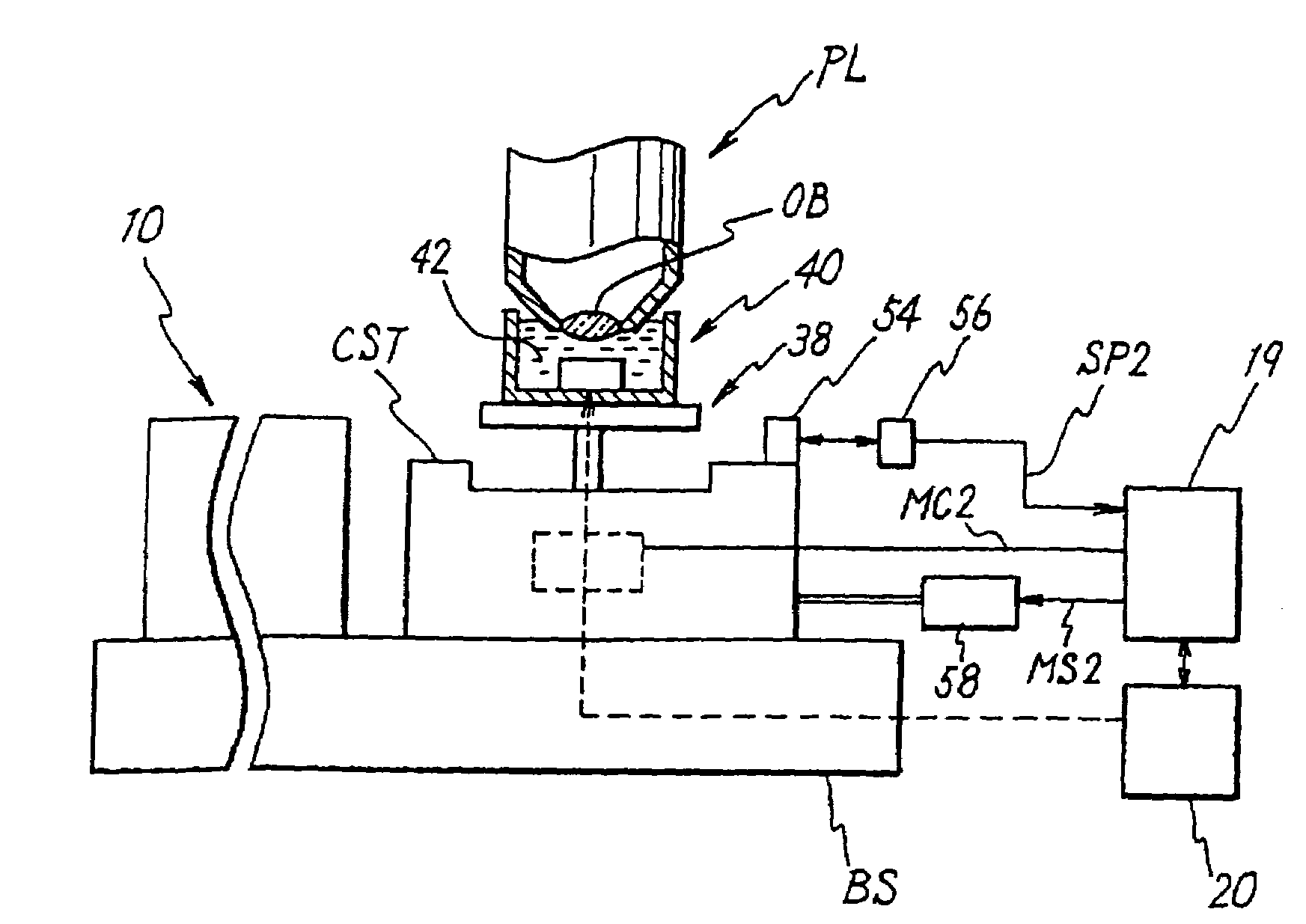Projection exposure apparatus and method
a technology of projection exposure and projection, which is applied in the direction of photomechanical equipment, printing, instruments, etc., can solve the problems of uneven transfer of lines of a pattern designed to have an even line width, uneven amount of exposure light, and failure of the finished product, so as to improve the workability of the apparatus and improve the accuracy of exposur
- Summary
- Abstract
- Description
- Claims
- Application Information
AI Technical Summary
Benefits of technology
Problems solved by technology
Method used
Image
Examples
embodiment 1
[Embodiment 1]
[0088]The projection exposure apparatus and method according to the first embodiment of the present invention (Embodiment 1) will be illustrated below with reference to FIGS. 1–5.
[0089]In the projection exposure apparatus of the present embodiment, pattern transfer onto a wafer W is performed, while cleaning an optical member (which is adapted to be disposed in the vicinity of the wafer W during pattern transfer) at the time when pattern transfer is not performed. A schematic illustration of the apparatus is presented in FIG. 1. The apparatus employs the so-called “step-and-scan” type of exposure mode.
[0090]As shown in FIG. 1, the apparatus comprises an illumination system comprising a light source 1 and an illumination optical system (including 2, 3 and 5–7); a reticle stage RST (i.e., a mask stage) for holding a reticle R (i.e., a mask); a projection optical system PL; a stage unit 10 which has a wafer stage WST for holding either a wafer W (i.e., a substrate) or a c...
embodiment 2
[Embodiment 2]
[0133]Hereinbelow, the projection exposure apparatus and method according to the second embodiment of the present invention (Embodiment 2) will be illustrated with reference to FIGS. 6 and 7. In the following description, the components similar to those described in Embodiment 1 above are denoted by the same reference numerals, and the overlapping explanatory descriptions are omitted.
[0134]The projection exposure apparatus of the present embodiment is characterized in that, as a cleaning device, in place of the cleaning member 8 disposed on the wafer stage WST in the projection exposure apparatus of Embodiment 1, an ultrasonic cleaning device 40 (schematically shown in FIG. 6) is disposed on a cleaning stage CST distinct from the wafer stage WST. The objective lens OB of the projection optical system PL is cleaned by the ultrasonic cleaning device 40 at the time when pattern transfer is not preformed.
[0135]As shown in FIG. 6, the ultrasonic cleaning device 40 is provid...
embodiment 3
[Embodiment 3]
[0150]Hereinbelow, the projection exposure apparatus and method according to the third embodiment of the present invention (Embodiment 3) will be illustrated with reference to FIGS. 8 and 9. In the following description, the components similar to those described in the above embodiments are denoted by the same reference numerals, and the overlapping explanatory descriptions are omitted.
[0151]The projection exposure apparatus of the present embodiment is characterized in that, the cleaning member 8 in the projection exposure apparatus of Embodiment 1 shown in FIG. 1 is disposed on the cleaning stage CST which is distinct from the wafer stage WST as shown in FIG. 8. The objective lens OB of the projection optical system PL is cleaned using the cleaning member 8 at the time when pattern transfer is not preformed. In other words, in the present embodiment, the ultrasonic cleaning device 40 in Embodiment 2 is replaced with the cleaning member 8 of Embodiment 1.
[0152]As in t...
PUM
| Property | Measurement | Unit |
|---|---|---|
| wavelength | aaaaa | aaaaa |
| wavelength | aaaaa | aaaaa |
| wavelength | aaaaa | aaaaa |
Abstract
Description
Claims
Application Information
 Login to View More
Login to View More - R&D
- Intellectual Property
- Life Sciences
- Materials
- Tech Scout
- Unparalleled Data Quality
- Higher Quality Content
- 60% Fewer Hallucinations
Browse by: Latest US Patents, China's latest patents, Technical Efficacy Thesaurus, Application Domain, Technology Topic, Popular Technical Reports.
© 2025 PatSnap. All rights reserved.Legal|Privacy policy|Modern Slavery Act Transparency Statement|Sitemap|About US| Contact US: help@patsnap.com



